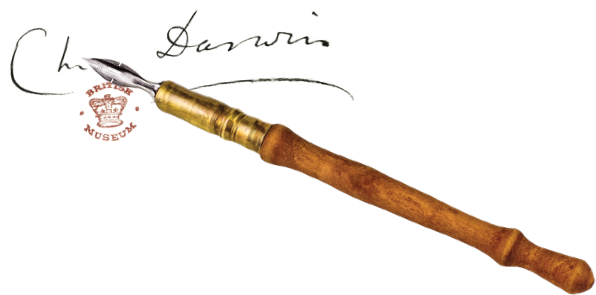Darwin’sDiscovery
In1831,ayoung,EnglishnaturalistnamedCharlesDarwinboardedashipcalledtheBeagle.Histaskinafive‑yearexpeditionwastocollectandstudyanimal,plant,androcksamples.Darwinwouldeventuallybecomeoneofthemostfamousscientistsofhistime.Heisbestknownforhiscontributionstothetheoryofevolution.Heproposedthatalllivingthingsdescendedfromcommon ancestors.
Whatislesswell‑knownaboutDarwin,however,wasthathewaspronetoseasickness.Yes.Darwinwasapuker.Andthereasonthisisrelevantisbecause,tocombathisterribleandconstantnauseaatsea,Darwinwasalwaysthefirsttogoashoreandthelasttoleaveit.Andbecauseofthattendency,hiscollectionofsampleswaslargerandmorediversethananyonehad expected.
TheBeagle’scaptain,RobertFitzRoy,keptdetailedlogsoftheshipanditsposition.Darwintookmanynotesandalsokeptajournal.Together,theserecordshelpustoknowtodayexactlywheretheytraveledandwhatthey collected.

San Cristóbal mockingbird
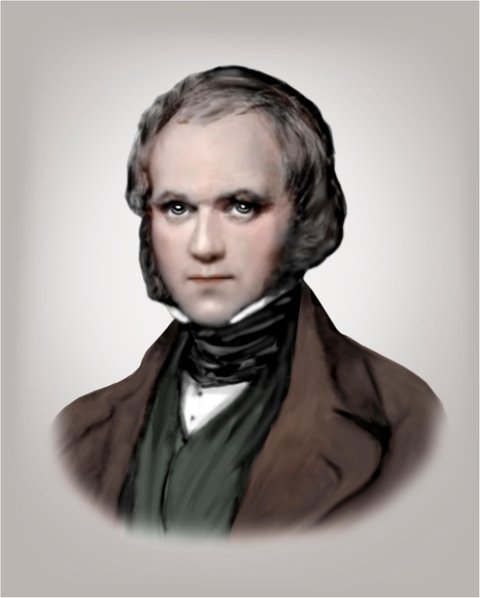
Charles Darwin
WhereTheyTraveled
TheBeaglereachedtheGalápagosin1835andspentfiveweeksthere.Darwinvisitedfourofthelargerislands.SanCristóbalwasfirst.Thisislandismadeupoffourvolcanoes,allextinct,andishometotheoldestpermanentsettlementofthe islands.
SanCristóbal’sdry,rockycoastwasnotwhatDarwinwasexpecting.Theislandseemeddevoidoflife.Thenheencounteredpilesof“hideous‑looking”marineiguanassunningthemselvesonthe rocks.
Ashewalkedon,hefoundpatchesofdesertplants.Inapartiallyvegetatedlavafield,hecameacrosstwoenormoustortoises,grazingon cactus.
ItwasherethatDarwincollectedthefirstspeciesthatlaterwouldbethefoundationofhistheoryofevolution,theSan Cristóbal mockingbird.
MockingbirdMystery
FloreanawasthesecondislandexploredbytheBeagleexpedition.Floreanaisthesiteoftheislands’first“postoffice,”establishedin1793bywhalers.It’sabarrelwithadoorcutintotheside.Nostampsneeded.Visitorscollectanddelivermailbyhandacrosstheworld.Thispostofficeisstillinuse today.
Darwinspentthreedaysherecollectingsamples,includingasecondimportantbird,theFloreanamockingbird.HesawdistinctdifferencesbetweenthisbirdandtheonefoundonSanCristóbal,whichpromptedhimtopaycloseattentiontoGalápagos birds.
OnFloreana,DarwinalsohadachanceencounterwithafellowEnglishmannamedNicholasLawson,whowastheactinggovernorfortheisland.LawsontoldDarwinthathecouldidentifywhichislandatortoisecamefromjustbylookingatitsshell.Eachisland’stortoisesweredifferent,he said.
ThevolcanothatisIsabelaIslandwasactivelyeruptingwhenDarwinexploredit.Heobservedlavaflowsandsmokecomingoutofcraters.Hetookdetailednotesandcollectedland iguanas.
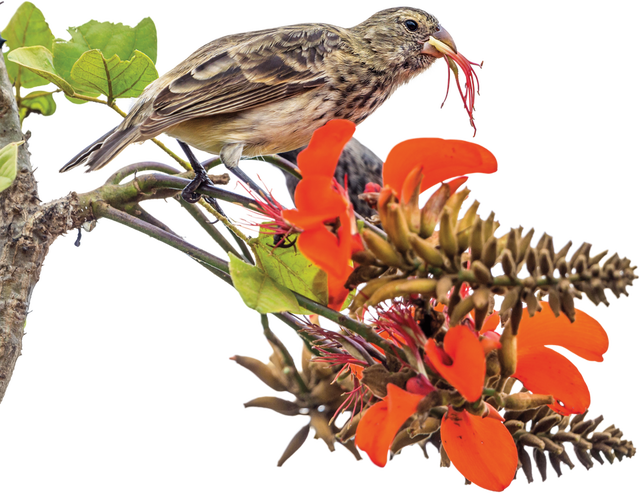
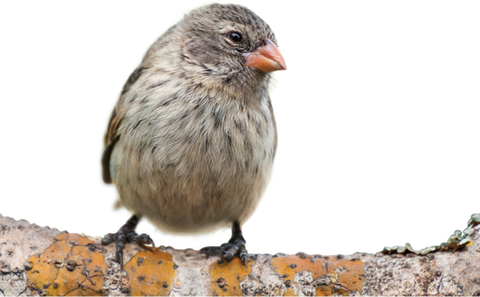
femalevegetarian finch
smallground finch
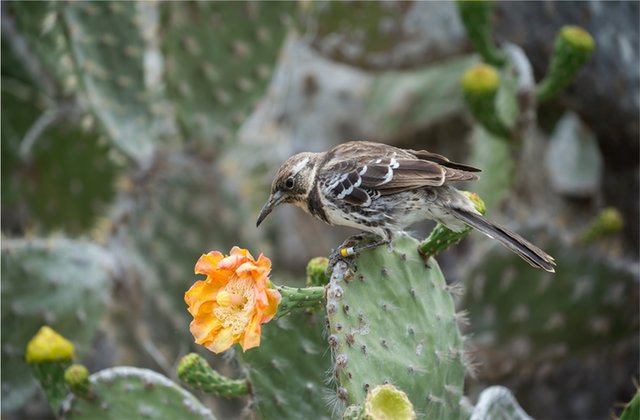
Floreana mockingbird
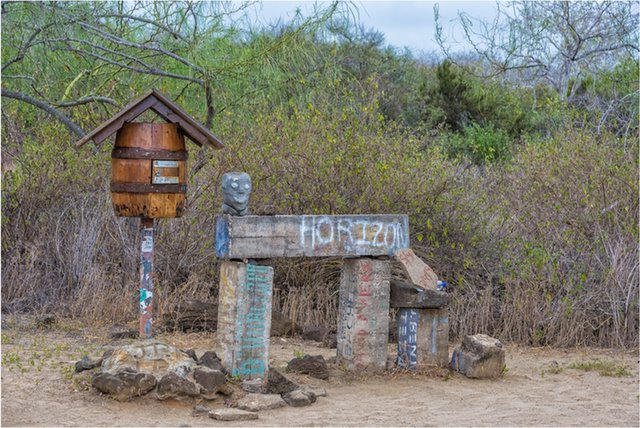
postoffice barrel
Darwin’sLongestStay
ItwasSantiagoIslandwhereDarwinstayedthelongest,anditwasherethathesawwhatLawsonhaddescribed:Thetortoisesweredifferent.Darwincollectedmanyplant,animal,androcksamples.Yet,hedidn’talwaysknowwhathewascollecting.Hedidn’talwaysunderstandwhathewas seeing.
Ofthemockingbirds,hecouldalreadyseefourdifferentspecies,eachfromadifferentisland.Hehadcollectedmanyfinches,too,andtheyallseemedtobe different.
WhenDarwinreturnedhome,hegavehisbirdsamplestotheGeologicalSocietyofLondon.Thefamed ornithologist JohnGouldexaminedthefinchesandfoundeachofthemtobedifferentenoughtojustifyatleast14distinctspecies.Darwinwouldponderthesebirdsformany years.
